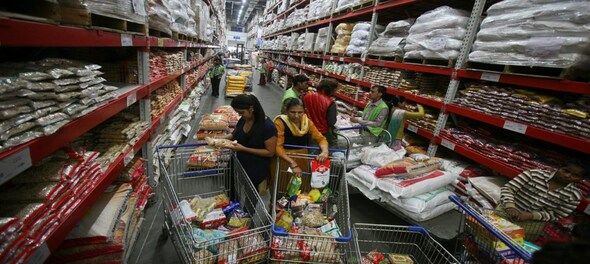
India’s inflation measured by the consumer price index (CPI) rose to a 16-month high of 4.6 percent in October. Inflation is back above the 4-percent target set for the Monetary Policy Committee (MPC) after a gap of 15 months. The MPC has reduced interest rates in every single policy meet since the start of the year citing persistent low inflation. With inflation’s trajectory having changed, this begs the question will the trajectory of interest rates also change? Before we answer this question, let us examine what is driving inflation. And it is pertinent to note that while headline inflation is not dramatically different from a year ago, the drivers have completely reversed.
Changed drivers of inflation
In the three months ending October, inflation has averaged just under 4 percent on a YoY basis. During the same period last year, inflation had averaged 3.6 percent. So, inflation is higher by 40 bps on a YoY basis, if we smoothen out the inflation’s trajectory slightly. That is not a material difference. Core inflation, which is CPI excluding food and fuel, has declined sharply from 6 percent in the three months ending October last year to 3.9 percent in the three months ending October this year. In contrast, food inflation has increased from just 0.5 percent to 4.9 percent during the same period. Last year, core inflation was the driver of inflation whereas now food inflation is the driver of inflation.

Food prices – A relatively benign driver of inflation
This difference is very important for monetary policy. This is because core inflation is generally considered to be sticky and reflective of underlying demand-supply mismatch in the economy while food inflation tends to be volatile and often driven by transient factors such as weather. So, if the uptick in inflation is being driven by core inflation, it is more likely to be sticky. Whereas if the uptick is being driven by food inflation, it may not be sticky, and inflation could easily reverse its upward trajectory. Given that the uptick in inflation in recent months is being driven by food inflation while core inflation has eased off significantly, this suggests that the MPC should not be overly concerned by the rise in inflation. It could simply be the inherent volatility of food inflation. And there are plenty of reasons to believe that the recent uptick in food inflation might be temporary.

The bottom line is that there are enough reasons for the MPC to not worry too much about the recent uptick in food inflation. There is, however, one caveat and that is the state of the agri-price cycle. Agriculture prices in India are highly cyclical and as the chart below demonstrates have followed a remarkably consistent pattern over the past 50-60 years. And currently, we are close to where cycles have historically bottomed out.
So one of the things the MPC needs to monitor closely in the coming months is whether the recent uptick in inflation is transient and something they can ignore or whether it marks a reversal in the medium-term trajectory of food inflation which will eventually feed through to core inflation through wages. The stance of monetary policy will be very different based on whether it is the first scenario that is playing out or the latter.
The ‘flexible’ 4 percent inflation target
Another point to note is that the 4 percent inflation target for the MPC is flexible. It is flexible in the sense that the achievement of the inflation mandate is not absolute. There is a secondary objective of growth that the MPC must keep in mind. It is subservient to the inflation mandate, but it exists. And it is flexible because there is a reasonably wide range of 2ppt around the 4 percent inflation target. It is only if inflation exceeds the outer band (of 6 percent) can the MPC be at risk of defaulting on its mandate. The appropriate monetary policy response when inflation is between 4 percent and 6 percent is a subjective assessment by the MPC (and hence by each of its members). So, it is quite conceivable that a particular MPC increases interest rates when inflation is at 5 percent whereas another MPC chooses to do nothing. Given that the composition of the current MPC has shifted towards being dovish after the resignation of Urjit Patel as well as Viral Acharya and also given the context of fairly weak economic growth, the current MPC is likely to be much more willing to tolerate above 4 percent (but below 6 percent) inflation. This is especially given that it looks as if at least some of the uptick in inflation could be transitory.
To conclude then, there is enough flux in the inflation data that given the deteriorating growth background and the flexible nature of the inflation mandate, the MPC can continue the path of monetary easing for now. It will, however, need to keep an eye out for signs that the recent uptick in food inflation is not transitory.
Ashutosh Datar is the Founder of IndiaDataHub.com, an online platform that brings together all the public data (economic, social, financial) concerning India in an user-friendly analytical app. Before founding IndiaDataHub, he was with IIFL Institutional Equities for over a decade as their Strategist and Economist.
Read Ashutosh Datar's columns here.
First Published: Nov 20, 2019 6:00 AM IST
Check out our in-depth Market Coverage, Business News & get real-time Stock Market Updates on CNBC-TV18. Also, Watch our channels CNBC-TV18, CNBC Awaaz and CNBC Bajar Live on-the-go!


Supreme Court says it may consider interim bail for Arvind Kejriwal due to ongoing Lok Sabha polls
May 3, 2024 4:57 PM
10% discount on fare on Mumbai Metro lines 2 and 7A on May 20
May 3, 2024 2:40 PM

